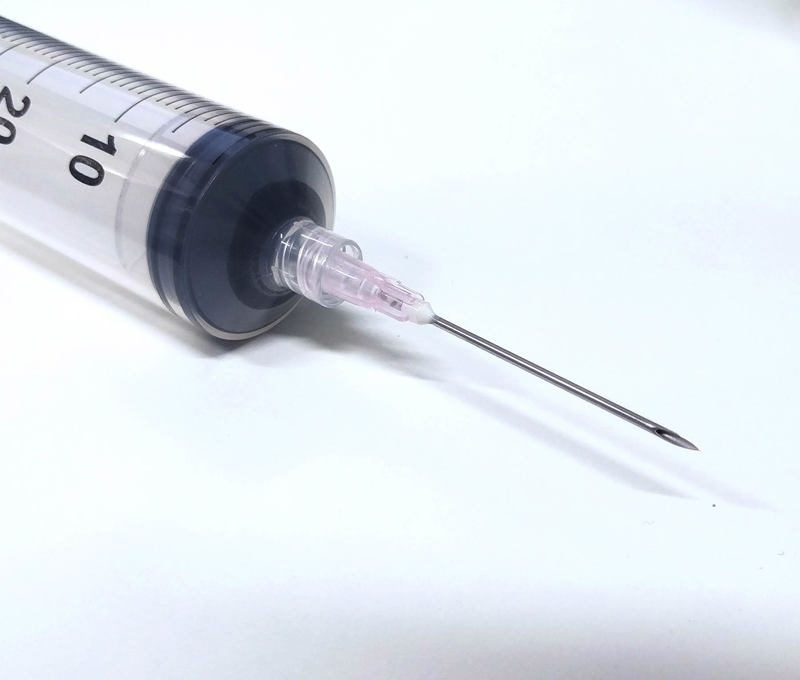Sharps
 A sharp is an item that could cause cuts or punctures. Sharps include:
A sharp is an item that could cause cuts or punctures. Sharps include:
- needles and syringes
- scalpels and blades
- infusion sets
- broken glass
- sharp instruments.
A syringe body is not considered to be a sharp. If a syringe body is contaminated with medicine it is classed as pharmaceutical waste.
There are three types of sharps. They are sharps:
- contaminated with cytotoxic and cytostatic medicines
- contaminated with other medicines
- that have not been used to administer medicines.
Disposing of sharps
Infected sharps are classified as hazardous/special waste. You must store, transport and dispose of this waste as hazardous/special waste to make sure you do not cause a risk to human health or the environment. You are committing an offence if you do not follow the regulations for dealing with hazardous/special waste.
You must not mix hazardous/special waste with your other waste or with other types of hazardous/special waste. Segregate your waste so that different wastes types do not get contaminated.
Segregating your healthcare waste
You must complete consignment notes for any hazardous/special waste that leaves your site. You must keep a register containing all of the consignment notes and the consignee returns. You must keep these records for three years.
You must ensure that your waste is stored, handled, recycled or disposed of safely and legally. You must comply with your waste responsibilities, known as your duty of care.
Duty of Care: Your waste responsibilities
You must make sure that sharps are disposed of in a way that ensures they are made safe.
In Northern Ireland:
- if contaminated with medicines, sharps must go for clinical waste incineration.
- if you segregate your non-medicinally contaminated sharps, you may dispose of them by alternative treatment, eg autoclaving.
In Scotland:
- non-infectious (non-hazardous) sharps may be made safe by shredding
- infectious (hazardous) sharps may be made safe by shredding combined with an appropriate alternative treatment
- sharps contaminated with, or containing, cytotoxic or cytostatic medicines must be made safe by incineration.
Containers for sharps
You must contain and dispose of sharps in a sharps box. You should never dispose of sharps in a bag, as this could injure staff.
Your containers should be clearly labelled by the manufacturer to show that they are suitable for and contain sharps waste.
Coloured containers
Use containers of the appropriate colours to dispose of sharps:
- If the sharps are contaminated with cytotoxic and cytostatic medicines, use yellow sharps boxes with purple lids.
- If the sharps are contaminated with medicines (other than cytotoxic and cytostatic medicines), use yellow sharps boxes with yellow lids.
- In Northern Ireland sharps that are not contaminated with medicines can be further segregated into yellow boxes with orange lids. These can then be treated rather than disposed of by incineration.
You can also use the containers with yellow and purple lids for used glass bottles, vials and syringe bodies contaminated with medicines, as well as for sharps.
Always check the labels as well as the colour coding.
How to complete the waste paperwork
Classifying and describing sharps waste
If you have segregated your waste according to this guidance, you will need to classify the waste in the consignment note as follows:
Use the European waste catalogue codes:
- 18 01 03* and 18 01 09 for infectious sharps contaminated with medicines (other than cytotoxic and cytostatic medicines)
- 18 01 03* and 18 01 08* for infectious sharps contaminated with cytotoxic and cytostatic medicines.
Example description: Clinical waste - mixed infectious sharps and pharmaceutical waste, for incineration only.
Syringes are still considered to be medicinally contaminated even if they are fully discharged.
If you segregate sharps not contaminated with medicines into yellow boxes with an orange lid you will need to classify the waste in the consignment note as follows:
Use the European waste catalogue code 18 01 03*
Example description: Clinical waste - sharps non-medicinally contaminated, suitable for alternative treatment.
You should not enter non-hazardous waste codes on consignment notes. You should describe and code each hazardous waste present on the consignment note.
Further information
GOV.UK: Safe management of healthcare waste (UK-wide)
SEE ALSO: pharmaceutical waste, cytotoxic and cytostatic waste, offensive waste
